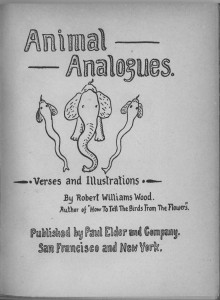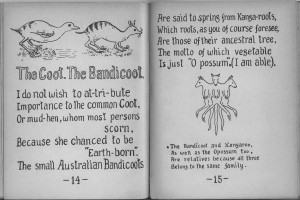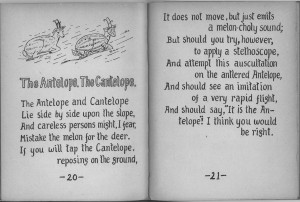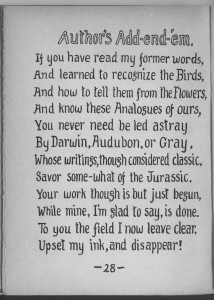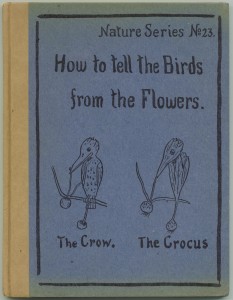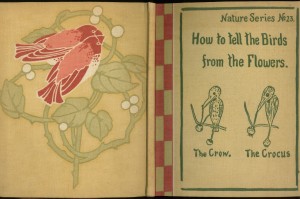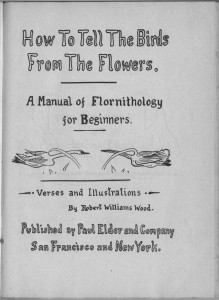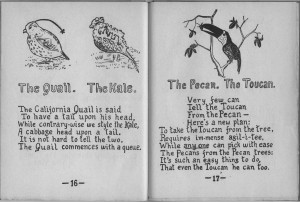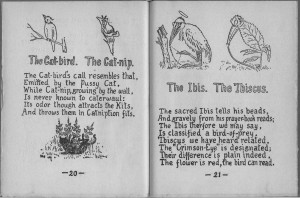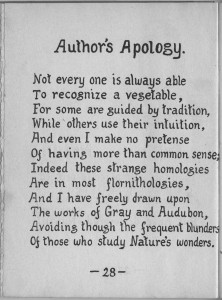
Pick up a book that was sold at Paul Elder’s bookshop, and open to the inside back cover. Quite often, in the lower-left corner, you will find—for want of a better term—a “postage stamp.” The size of an actual postage stamp and moistened in the same manner, they were affixed to many if not most of the books sold in the shop: not just Elder’s own publications, but all the other books too. They were probably affixed by the cashier at the till while wrapping up the book.
The earliest known stamp (A) dates from 1899, before Elder and Shepard began to use the tomoye. It looks rather like a heraldic design: “per pale argent and sable on a vertical arrow, a seahorse traversed.” The significance of the design itself is unknown. At this time, Elder was still calling himself “D. P. Elder.”
Elder and Shepard began using the tomoye design in 1900, principally on the title pages of their publications. The earliest known example of the first tomoye stamp (B) is from 1901.
The Santa Barbara (C) and San Francisco (D) stores each had its own stamp; perhaps New York did as well but that has not been seen.
Stamp E, featuring a tomoye surrounded by delicate tracery, had the longest lifespan; it has been seen as early as 1911, and as late as 1946.
By the 1950s, much had changed. Paul Sr. died in 1948, and Paul Jr. moved the bookstore to the corner of Sutter & Stockton. The company now used self-adhesive stickers (F) with a decidedly modern look to match the decidedly modern store.

